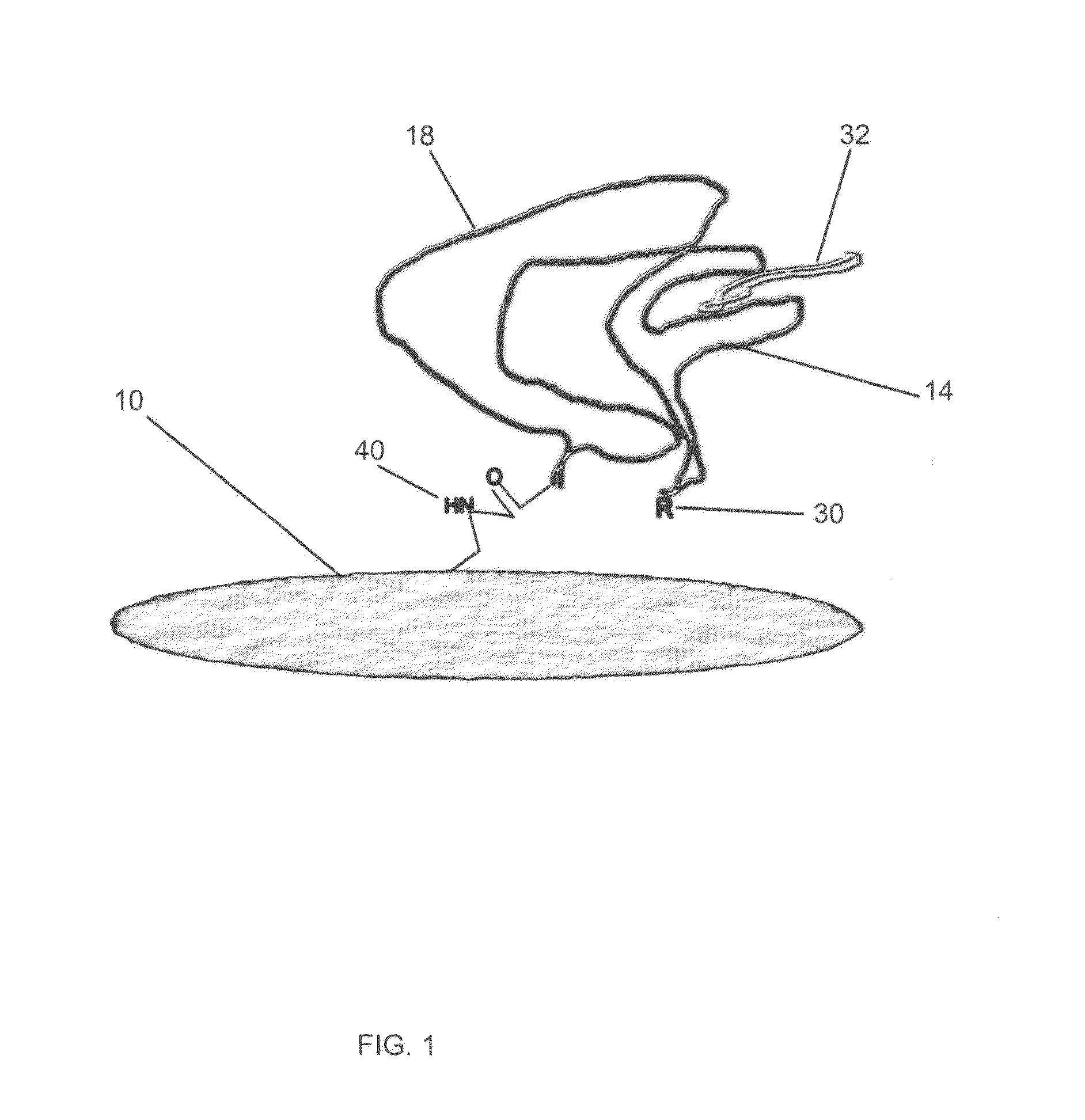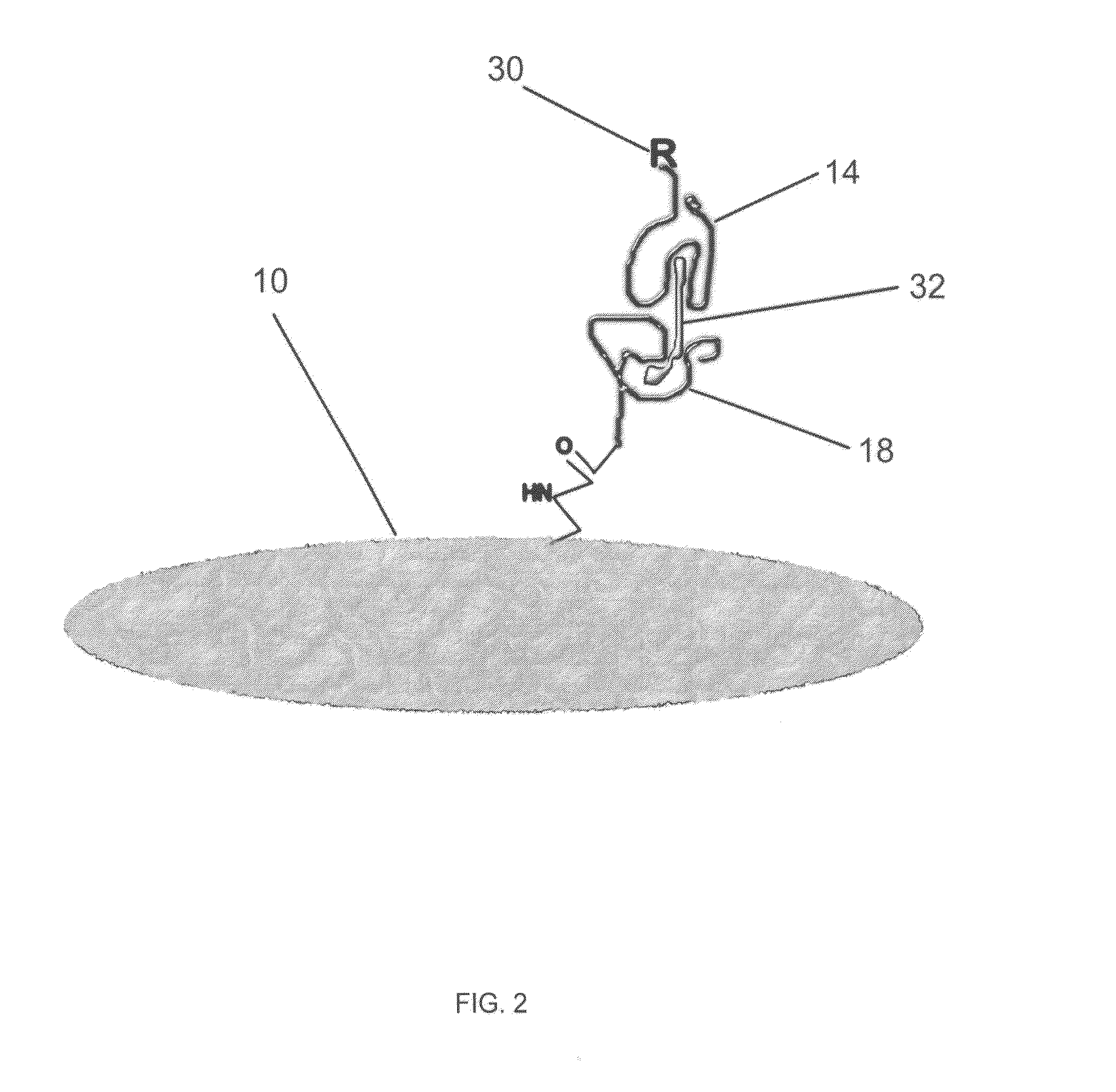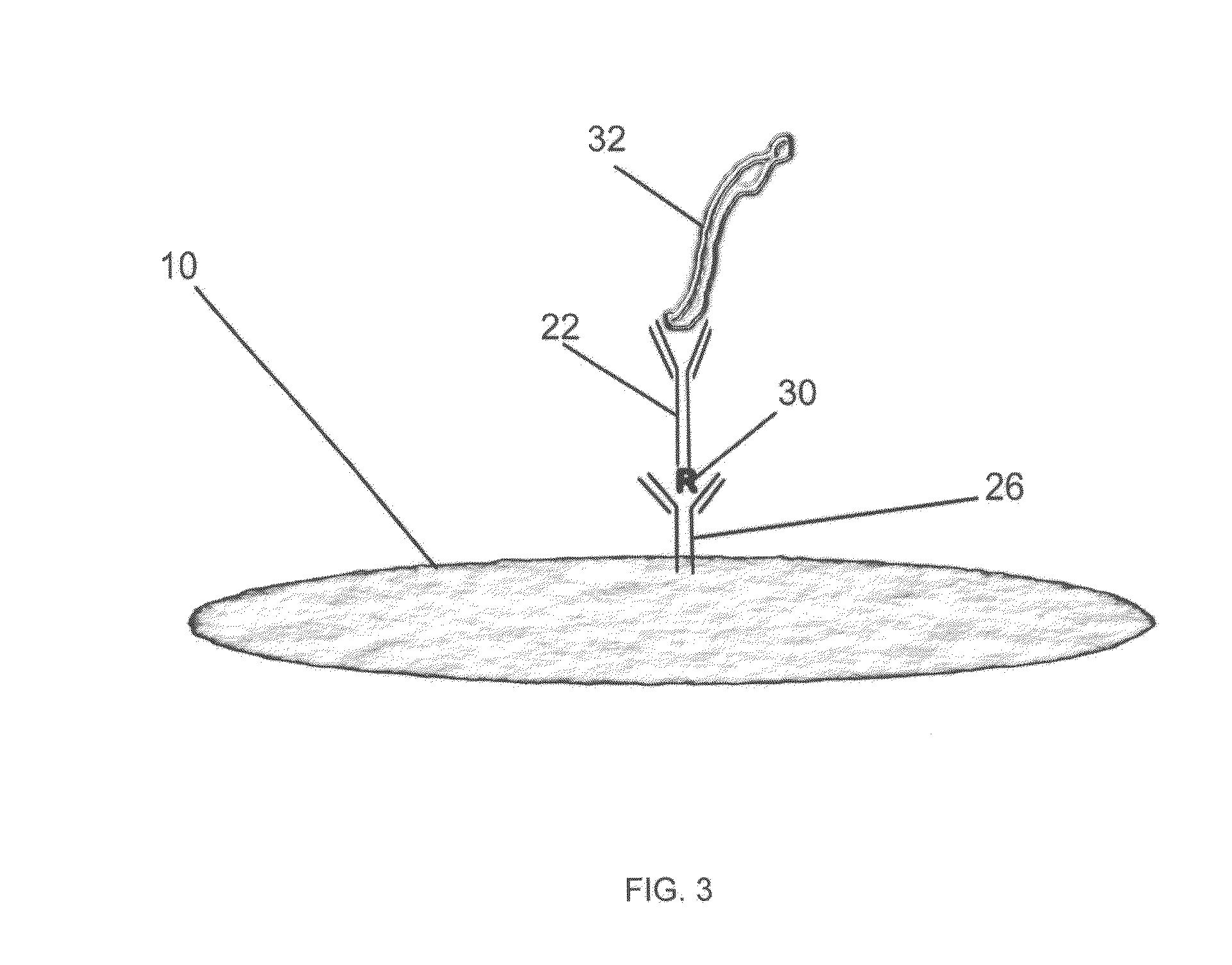Methods and Devices for Rapid Detection of Live Microorganisms by Aptamers and/or Antibodies Immobilized on Permeable Membranes
a technology of permeable membrane and microorganisms, applied in the field of microorganism detection, can solve the problems of high cost, time and labor, and complex laboratory equipment and personnel, and achieve the effect of rapid detection and identification
- Summary
- Abstract
- Description
- Claims
- Application Information
AI Technical Summary
Benefits of technology
Problems solved by technology
Method used
Image
Examples
example 1
Rapid Detection and Identification of Group B Streptococcus (GBS) Using Aptamers as Reporter and Capture Compounds
[0055]A liquid sample containing an unknown number of live bacterial species including the target bacterium GBS (also known as Streptococcus agalactiae) is set up as described below. Alternatively, a sample containing an unknown mixture of live bacterial species including the target bacterium GBS is poured on a Petri plate filled with sheep blood agar (SBA); the plate is incubated at a temperature of about 37° C. for about 3 to 6 hours to grow the bacteria; and, after the bacterial species is grown and microcolonies appear, a sample specimen of the microcolonies is set up as described below. A 0.5 McFarland of the liquid sample or, alternatively, a sample of the grown microcolonies, is prepared as commonly known in the art and the bacteria are serially diluted, starting at about 105 bacteria / ml. To each dilution, a 1:30 dilution of horse-radish peroxidase (HRP) conjugate...
example 2
Rapid Detection and Identification of GBS Using Aptamers as Reporter and Capture Compounds and Selected Against Two Different Sites of GBS
[0056]A liquid sample containing an unknown number of live bacterial species including the target bacterium GBS is set up as described below. Alternatively, a sample containing an unknown mixture of live bacterial species including the target bacterium GBS is poured on a Petri plate filled with SBA; the plate is incubated at a temperature of about 37° C. for about 3 to 6 hours to grow the bacteria; and, after the bacterial species is grown and microcolonies appear, a sample specimen of the microcolonies is set up as described below. A 0.5 McFarland of the liquid sample or, alternatively, a sample of the grown microcolonies, is prepared as commonly known in the art and the bacteria are serially diluted, starting at about 105 bacteria / ml. To each dilution, a 1:30 dilution of HRP conjugated to aptamers selected against one antigenic site of GBS is ad...
example 3
Rapid Detection and Identification of GBS Using Antibodies as Reporter and Capture Compounds
[0057]A liquid sample containing an unknown number of live bacterial species including the target bacterium GBS is set up as described below. Alternatively, a sample containing an unknown mixture of live bacterial species including the target bacterium GBS is poured on a Petri plate filled with SBA; the plate is incubated at a temperature of about 37° C. for about 3 to 6 hours to grow the bacteria; and, after the bacterial species is grown and microcolonies appear, a sample specimen of the microcolonies is set up as described below. A 0.5 McFarland of the liquid sample or, alternatively, a sample of the grown microcolonies, is prepared as commonly known in the art and the bacteria are serially diluted, starting at about 105 bacteria / ml. To each dilution, a 1:30 dilution of HRP conjugated to rabbit polyclonal antibodies against GBS is added to bring the final volume up to 100 ml. The sample is...
PUM
| Property | Measurement | Unit |
|---|---|---|
| time | aaaaa | aaaaa |
| temperature | aaaaa | aaaaa |
| volume | aaaaa | aaaaa |
Abstract
Description
Claims
Application Information
 Login to View More
Login to View More - R&D
- Intellectual Property
- Life Sciences
- Materials
- Tech Scout
- Unparalleled Data Quality
- Higher Quality Content
- 60% Fewer Hallucinations
Browse by: Latest US Patents, China's latest patents, Technical Efficacy Thesaurus, Application Domain, Technology Topic, Popular Technical Reports.
© 2025 PatSnap. All rights reserved.Legal|Privacy policy|Modern Slavery Act Transparency Statement|Sitemap|About US| Contact US: help@patsnap.com



